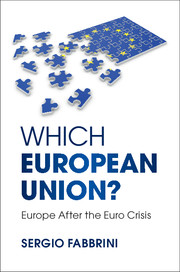Book contents
- Frontmatter
- Dedication
- Contents
- List of boxes
- List of figures
- List of tables
- List of abbreviations
- Preface – How many unions?
- Acknowledgments
- Part I Institutionalization of multiple unions
- Part II Main perspectives on the European Union
- Part III Towards the compound union perspective
- 7 Comparing democratic models
- 8 Compound unions and the EU
- 9 A new political order in Europe
- Appendix
- Glossary
- References
- Index
7 - Comparing democratic models
Published online by Cambridge University Press: 05 March 2015
- Frontmatter
- Dedication
- Contents
- List of boxes
- List of figures
- List of tables
- List of abbreviations
- Preface – How many unions?
- Acknowledgments
- Part I Institutionalization of multiple unions
- Part II Main perspectives on the European Union
- Part III Towards the compound union perspective
- 7 Comparing democratic models
- 8 Compound unions and the EU
- 9 A new political order in Europe
- Appendix
- Glossary
- References
- Index
Summary
Introduction
The previous three perspectives have been based on weak analytical grounds because they have not recognized the precise nature of the EU and its democratic functioning. The economic community perspective has unrealistically equated the EU to a regional economic organization. The intergovernmental union perspective has assumed the EU as a sui generis union of governments. The parliamentary union perspective has considered the EU as a variant of the federal state, where European citizens matter more than national governments. However, the EU is not a simple economic community; it is more than a union of national governments; it is different from a national federal state. If it is a federal union of states, under which model of democracy does a federal union function? I call it the compound democracy model (S. Fabbrini 2010) and its combination with the political division and institutional features of a federal union is at the basis of the compound union perspective.
This perspective also has both a descriptive and prescriptive character. In order to meet the first requirement (analytical description), it is essential to identify the democratic models of established political systems; that is, the institutional and functional properties that distinguish, first, the different democratic models adopted by nation states and, second, the models of democracy of nation states and the model of democracy of unions of states. Once the model of democracy adopted by unions of states has been identified, then in Chapter 8 I will come back to the EU to compare it with the other unions of states in order to detect similarities and dissimilarities between them. Only on these analytical bases will it then be possible to advance prescriptive proposals for reforming the EU in coherence with the democratic logic of unions of states (as I will do in Chapter 9). A democratic model does not coincide with the specific constitutional form of a political system, although it is affected by that form, but it conceptualizes the logic through which a political system takes decisions, combining representation (legitimacy) and governability (effectiveness).
- Type
- Chapter
- Information
- Which European Union?Europe After the Euro Crisis, pp. 187 - 218Publisher: Cambridge University PressPrint publication year: 2015
- 1
- Cited by



